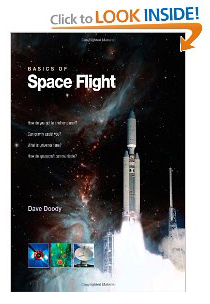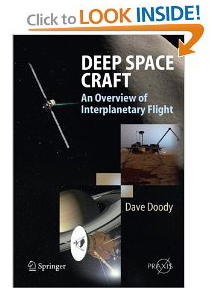(1) Nominal Course Session Breakdown
In practice, topics and objectives are usually swapped around among sessions, rather than strictly maintaining the nominal (example) order listed below. This approach allows the class sessions to feature the latest current space-mission events, accommodates questions and discussions as they arise, and allows the instructor to include interactive activities at appropriate points during the night sessions. The instructor will make such choices during course sessions to the extent that they can be implemented seamlessly and without causing confusion among the participants. By the end of the 7-session course, all the topics will have been addressed, and all the objectives in the checklist will nominally be met.
The nominal breakdown below will also be adjusted to accomodate the Guest Speakers' availability. Note: planet spotting and viewing on the Rooftop Patio is of course dependant on the weather, the relative position of Earth and the other planets, as well as the schedule availability of the Rooftop Patio, and so the activity will move around among the sessions called out in the example below.
SESSION 1
CONTENT:
- Course Introduction
- The Sun and the heliosphere
- Structures and temperatures in interplanetary space
- The magnetic fields in which we live
- Electromagnetic radiation
- Introduction to spacecraft
- Introduction to spacecraft communications
- The Key to Interplanetary Flight
Of note especially regarding "The Key to Interplanetary Flight" (a simplified set of orbital mechanics concepts) is that the participants will depart this crucial first session at ACAN with the satisfaction of having achieved and demonstrated and applied a firm understanding of an important basic, yet "advanced-sounding," concept. The participant will thus also have learned that the seminar's subject matter is not going to be too difficult; that it will largely involve novel uses and labels for familiar physical phenomena.
SESSION 2
CONTENT:
- The worlds we know: Our solar system
- The worlds we don't know: Estrasolar planets that have been discovered
- Location, location, location! What's the scale of where we live?
- Activity: Create & deploy impromptu 200-ft solar system scale model
- Ellipses and orbits, gravitation and tidal forces
- Trajectories for travel among the planets
- Motion in Interplanetary Space - movie version / real version
- The unexpected diversity among the moons of the planets
(Is there life in Europa's warm saltwater ocean?)
- Reference systems for making sense of space and time
- A close look at some more Spacecraft
- Comets and asteroids and meteors oh my!
- The mysterious "dark stuff" they brought to earth - life's broth?
SESSION 3
CONTENT:
- Gravity assist
- A close look at some more Spacecraft
- The diversity of the planets & moons, Part 2
- Useful orbits around your choice of planet
- The Lagrange "hover" points
- Activity: Gravity assist simulation
- Activity: forward- and back-scattered light experiment
SESSION 4
CONTENT:
- The diversity of the planets & moons, Part 3
- How it all came to be
- Types of spacecraft and launch vehicles
- Onboard systems
- Science Instruments
- A closer look at some missions
- Kinds of data: science, engineering, navigation
- Virtual visit to flight operations
- Publishing your findings
- Activity: Rooftop planet spotting & viewing, weather permitting
SESSION 5
CONTENT:
- Electromagnetics and new senses
- The spectrum, emitters and absorbers
- Refraction, reflection, and skipping stones
- Doppler, phase
- Spectroscopy: knowledge at a distance
- Activity: viewing familiar objects in the infra-red
- Activity: Rooftop planet spotting & viewing, weather permitting
SESSION 6
LOCATION: 4800 Oak Grove Drive Pasadena
OPTIONAL: FIELD TRIP TO NASA JET PROPULSION LABORATORY
(POSSIBLY INCORPORATING A SPECIAL LECTURE OR VISITOR)
Participants fil out a questionaire during the first session asking whether or not they would like to participate in this activity. Consensus rules. (Since 2006, none have elected not to participate.) Cameras are welcome.
CONTENT:
- Explore the spacecraft museum
- View the latest spacecraft being assembled
- Use the hands-on Gravity Assist Mechanical Simulator
- Tour the Space Flight Operrations Facility
- Visit the Deep Space Network operations center
- Discuss ad-hoc topics
SESSION 7
CONTENT:
- How an interplanetary mission takes shape
- Technology Readiness Levels: TRL
- Mission phases: launch, cruise, encounter, wrapup
- Telecommunications
- Symbols and bits
- Telemetry, beacons
- The Deep Space Network
- Nav: Where am I going and how do I change course?
- Activity: bits to symbols to bits across a distance
- Complete course review and evaluation
(2) Checklist of Specific Objectives
During the course as a whole, each participant will grasp each of the specific learning objectives listed in the checklist. Click below for the list. For each listed objective, each participant is expected to obtain at minimum an intuitive grasp of understanding so that s/he can explain it to others, at least to the level described in the text. The checklist of objectives is divided into seven sections, mapping to a nominal content for each session.
The objectives-checklist approach lends itself to participants evaluating their performance and their confidence in grasp of the material. A hardcopy of the list will be given to each course participant with a place for the individual participant to record his or her perceptions regarding, for example:
- How new is this to me, 0 - 10
- How well do I understand, 0 - 10
- How well could I explain it to someone, 0 - 10
- Comments
(3) Individual Projects
The instructor will offer participants the entirely optional opportunity to give a presentation on a topic of thier choosing, to be researched and prepared between sessions, in an area related to class topics. The presentation will be strictly limited to 40 minutes of class time; it may use all audiovisual media, for example, plug in a laptop and step through visuals etc for all participants to see. It may of course include hands-on activities.
The next part is for the self-starter participant who happens to read this; the instructor will probably make little or no mention of this during the sessions.
Each participant is invited to design one or more original projects that somehow explores a topic of interest to the class. Such a project would presumably comprise more extensive work than the presentation described above, and may include various activities or media. A participant might also choose to collaborate with one or more participants on such a project. Any such project is entirely voluntary, and will be welcomed as an "extra" activity over and above normal expectations. The participant is encouraged to offer to display/conduct it in class at any of our seven meetings, with little or no advance notice.
(4) Course Texts and Glossary
 The text to be followed during this course, The Basics of Space Flight, is freely available online. Online use is preferred, so that the participant can explore the many hyperlinks and animations it contains, as needed to establish understanding, or to dig more deeply into subjects of individual interest. Another advantage of online use is that the online text is updated and corrected once in a while. For those who would rather carry the text with them, there is a free-downloadable PDF of it on the above website, and two versions of the optional paperback hardcopy book (color or black & white) created from the contents of the JPL Basics website.
The text to be followed during this course, The Basics of Space Flight, is freely available online. Online use is preferred, so that the participant can explore the many hyperlinks and animations it contains, as needed to establish understanding, or to dig more deeply into subjects of individual interest. Another advantage of online use is that the online text is updated and corrected once in a while. For those who would rather carry the text with them, there is a free-downloadable PDF of it on the above website, and two versions of the optional paperback hardcopy book (color or black & white) created from the contents of the JPL Basics website.
 For greater depth involving some quantative treatments, the participant is encouraged to read Deep Space Craft, which is an overview of interplanetary flight published by Springer-Praxis.
For greater depth involving some quantative treatments, the participant is encouraged to read Deep Space Craft, which is an overview of interplanetary flight published by Springer-Praxis.
Learning new concepts goes hand-in-hand with learning new jargon. During class sessions, it is highly recommended for participants to have a copy of at least the Glossary and Units of Measure from Basics of Space Flight, if not the book.
(5) Instructional Methods, Testing & Evaluation
The specific concepts enumerated in the checklist will be conveyed using an appropriate mix of lecture, design-based learning, ongoing Q&A, brainstorm, quick group discussions, one or two "guest star" appearances, in-class demonstrations, site visit, and skillful use of media.
Testing is entirely optional for the participants, and if undertaken, will be accomplished outside the course session hours. The only testing offered will be the quizzes in the online text, and individual use of the checklist. Participants will be encouraged to share their testing results with one another, and their perceptions of the specific objectives on the checklist, with the instructor and with other participants.